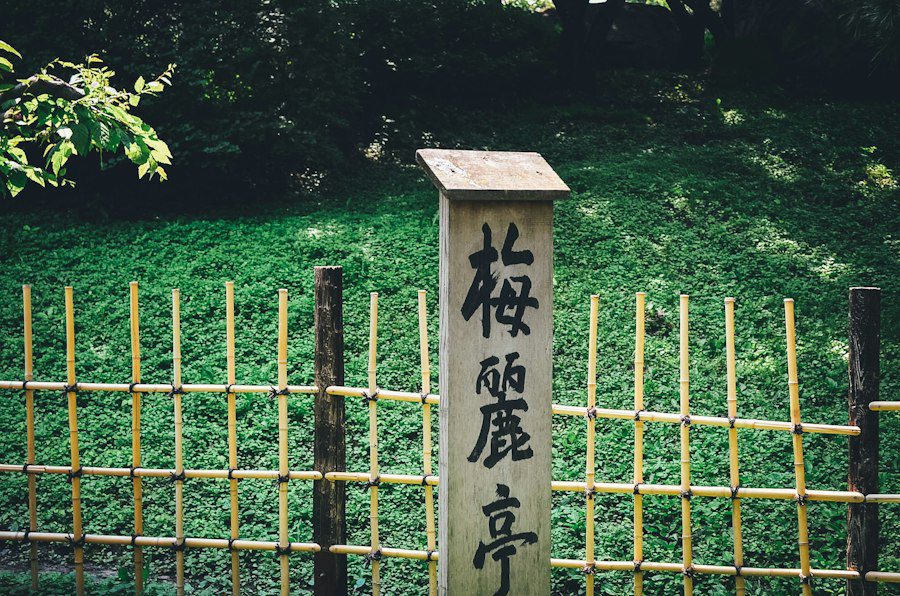Dharuk language has a rich history that dates back thousands of years. It is believed to have evolved from the Proto-Pama-Nyungan language family, which is one of the largest language families in Australia. The Dharug people have inhabited the Sydney region for over 40,000 years and have a deep connection to the land and their language.
The Dharuk language played a crucial role in the cultural and social life of the Dharug people. It was used for communication within the community, passing down traditional knowledge, storytelling, and maintaining cultural practices. The language was also closely tied to the land and reflected the unique relationship between the Dharug people and their environment.
The Current Status of Dharuk Language: Challenges and Opportunities
Unfortunately, like many Indigenous languages around the world, the Dharuk language is currently endangered. There are only a few fluent speakers left, most of whom are elderly. The younger generations have not had the same exposure to the language due to historical factors such as colonization and forced assimilation.
The challenges faced by the Dharuk language are numerous. One major challenge is intergenerational transmission, as younger generations are not learning the language from their elders. There is also a lack of resources and infrastructure for language revitalization efforts. Additionally, there is a need for community support and engagement to ensure the sustainability of language preservation initiatives.
However, there are also opportunities for revitalization and preservation. The Dharug community has been actively working towards reclaiming and revitalizing their language. There are language programs, workshops, and resources available to help teach the language to interested individuals. The Dharug community is also collaborating with linguists, educators, and technology experts to develop innovative approaches to language preservation.
The Linguistic Features of Dharuk Language: Syntax, Grammar, and Vocabulary
The Dharuk language has a unique linguistic structure that sets it apart from other languages. It is classified as a polysynthetic language, which means that words can be formed by combining multiple morphemes. The syntax of the language is also different from English, with verbs often appearing at the beginning of sentences.
The grammar of Dharuk is complex and highly inflected. It has a rich system of noun classes and verb conjugations that indicate tense, aspect, mood, and person. The vocabulary of the language is closely tied to the natural environment and reflects the deep connection between the Dharug people and their land.
The Cultural Significance of Dharuk Language: Identity and Heritage
| Linguistic Feature | Description |
|---|---|
| Syntax | The arrangement of words and phrases to create well-formed sentences in Dharuk language. |
| Grammar | The set of rules that govern the structure of Dharuk language, including morphology, syntax, and semantics. |
| Vocabulary | The set of words and phrases used in Dharuk language, including nouns, verbs, adjectives, and adverbs. |
The Dharuk language plays a crucial role in preserving cultural identity and heritage for the Dharug community. Language is not just a means of communication; it is also a reflection of cultural practices, beliefs, and values. By preserving the Dharuk language, the Dharug people can maintain their unique cultural identity and pass down traditional knowledge to future generations.
Language is also closely tied to cultural practices and rituals. Many cultural ceremonies and traditions are performed in the Dharuk language, and without it, these practices may be lost or lose their authenticity. The language also holds deep spiritual significance for the Dharug people, as it is believed to connect them to their ancestors and the land.
The Importance of Preserving Dharuk Language: Social and Political Implications
The loss of a language has significant social and political implications. Language is not just a tool for communication; it is also a reflection of power dynamics and social hierarchies. When a language is lost, it often signifies the loss of cultural autonomy and self-determination for the community that speaks it.
Language loss can also lead to the erosion of cultural diversity and the homogenization of societies. Each language carries unique knowledge, perspectives, and ways of understanding the world. When a language disappears, this diversity is lost, and with it, valuable insights into different ways of being and knowing.
Politically, the preservation of Indigenous languages is crucial for recognizing and respecting the rights of Indigenous peoples. Language is an integral part of Indigenous culture and identity, and its preservation is essential for upholding Indigenous rights to self-determination, cultural autonomy, and land rights.
The Role of Dharuk Language in Indigenous Communities: Education and Empowerment

The Dharuk language plays a vital role in Indigenous communities in terms of education and empowerment. Language is not just a means of communication; it is also a tool for learning, understanding, and expressing oneself. When Indigenous languages are taught in schools, it helps to validate the cultural identity of Indigenous students and provides them with a sense of belonging.
Language also plays a crucial role in empowering Indigenous communities. When people are able to speak their own language, they have greater agency and control over their lives. Language revitalization efforts can help to empower Indigenous communities by providing them with the tools and resources they need to reclaim their language and culture.
Reviving Dharuk Language: Strategies and Approaches
Revitalizing an endangered language like Dharuk requires a multi-faceted approach that involves collaboration between the Dharug community, linguists, educators, and technology experts. Some strategies for language revitalization include:
1. Community involvement: The Dharug community must be actively involved in the revitalization efforts. This includes engaging community members, elders, and young people in language programs, workshops, and cultural events.
2. Language documentation: Linguists and researchers play a crucial role in documenting the Dharuk language. This includes recording fluent speakers, collecting oral histories, and creating dictionaries and grammars.
3. Language programs: Language programs and workshops can help teach the Dharuk language to interested individuals. These programs can be tailored to different age groups and learning styles to ensure accessibility and effectiveness.
4. Technology and digital tools: Technology can play a significant role in language preservation and learning. Digital tools such as language apps, online resources, and social media platforms can help make the language more accessible to a wider audience.
Dharuk Language and Technology: Digital Tools for Language Preservation and Learning
Technology has revolutionized the field of language preservation and learning. Digital tools and resources can help make the Dharuk language more accessible to a wider audience and provide new opportunities for language revitalization.
Language apps, such as mobile applications that teach vocabulary and grammar, can be a valuable tool for learning the Dharuk language. These apps can be designed to be interactive, engaging, and tailored to different learning styles.
Online resources, such as websites and databases, can provide access to dictionaries, grammars, recordings of fluent speakers, and other language materials. These resources can be freely available to anyone with an internet connection, making the language more accessible to a wider audience.
Social media platforms can also play a significant role in language revitalization efforts. Platforms such as Facebook groups or YouTube channels can be used to share language lessons, cultural events, and other resources. These platforms can also facilitate connections between Dharuk speakers and learners, creating a sense of community and support.
The Future of Dharuk Language: Prospects and Challenges
The future of the Dharuk language is both promising and challenging. On one hand, there is a growing interest in Indigenous languages and a recognition of their cultural and historical importance. There are also dedicated individuals and organizations working towards language revitalization and preservation.
However, there are also significant challenges that need to be addressed. The intergenerational transmission of the language remains a major hurdle, as younger generations are not learning the language from their elders. There is also a need for more resources, funding, and infrastructure to support language revitalization efforts.
The future of the Dharuk language ultimately depends on the collective efforts of the Dharug community, linguists, educators, policymakers, and society as a whole. Continued support and investment in language preservation initiatives are crucial for ensuring the survival and revitalization of the Dharuk language.
Dharuk Language and Multilingualism: Building Bridges between Cultures and Communities
Multilingualism plays a crucial role in building bridges between cultures and communities. When different languages are spoken and valued, it promotes cultural diversity, understanding, and respect. The Dharuk language can play a significant role in promoting cultural diversity in Australia and fostering greater understanding between Indigenous and non-Indigenous communities.
Language is not just a means of communication; it is also a reflection of cultural practices, beliefs, and values. When different languages are spoken and valued, it helps to preserve cultural diversity and prevent the homogenization of societies.
The Dharuk language can also help to bridge the gap between Indigenous and non-Indigenous communities in Australia. By learning the Dharuk language, non-Indigenous individuals can gain a deeper understanding of Indigenous culture, history, and perspectives. This can help to break down stereotypes, challenge biases, and promote reconciliation.
The Dharuk language is a significant Indigenous Australian language that holds deep cultural and historical importance for the Dharug community. It is currently facing challenges and is at risk of being lost. However, there are opportunities for revitalization and preservation through community involvement, language programs, technology, and collaboration.
Preserving the Dharuk language is not just about language itself; it is about preserving cultural identity, heritage, and self-determination for the Dharug community. It is also about recognizing and respecting the rights of Indigenous peoples and promoting cultural diversity and understanding.
The future of the Dharuk language depends on the collective efforts of the Dharug community, linguists, educators, policymakers, and society as a whole. Continued support and investment in language preservation initiatives are crucial for ensuring the survival and revitalization of the Dharuk language.
If you’re interested in learning about endangered languages, you might also want to check out this article on the Dharuk Language. Dharuk is an Aboriginal language that was spoken by the Dharug people in the Sydney region of Australia. Unfortunately, the language is now considered extinct, but efforts are being made to revive and preserve it. To read more about the Dharuk Language, click here.
FAQs
What is Dharuk Language?
Dharuk Language is an extinct Australian Aboriginal language that was spoken in the Sydney area of New South Wales, Australia.
When was spoken?
Dharuk Language was spoken before the arrival of Europeans in Australia, and it became extinct in the early 20th century.
Who spoke ?
Dharuk Language was spoken by the Dharug people, who were the traditional owners of the land in the Sydney area.
What is the history ?
Dharuk Language has a long history, with evidence of its use dating back thousands of years. It was spoken by the Dharug people until the arrival of Europeans in Australia, which led to the decline and eventual extinction of the language.
Is still spoken today?
No, Dharuk Language is no longer spoken today. However, there are efforts to revive the language and preserve its cultural heritage.
What is being done to preserve ?
Efforts are being made to preserve Dharuk Language through language revitalization programs, educational initiatives, and cultural events. These efforts aim to keep the language and its cultural heritage alive for future generations.
